IGWG Member Reflections Gender Inequities Facing Health Workers
The 2023 Interagency Gender Working Group (IGWG) Plenary, Breaking Barriers: Addressing Gender Inequities Facing Global Health Workers, explored research examining gender inequities in the health workforce and showcased promising practices and lessons learned from innovative programs working to address gender barriers.
Ahead of the event, we asked IGWG members to share their personal experiences facing gender inequities and barriers in the health workforce or addressing these inequities in work, research, and/or advocacy efforts.

At the moment, I’m researching inequalities between men and women. With the evolution of new global data, the issue of inequality is becoming a sore point with both direct and indirect observers. Here’s what we need to focus on to achieve gender balance:
- Pay differentials
- Imbalance in the sharing of domestic tasks
- Imbalance in childcare
- Imbalance in elected office
- Imbalance in bureaucratic positions
My university academic research titled ‘Assessment on the Factors That Cause Health Workers Divergence From Their Professions to Other Careers’ [discovered] that it is difficult for women practicing nursing to keep their professions when they marry and [they] must relocate to where their husbands reside. This compels individuals to shift careers and, in some cases, resign entirely. As a young female leader, I feel this narrative needs to change.
As an advocate, I lead a network of youth advocates…called Global Platforms from Addis Ababa city, and Guna, Ameya and Benchi woredas [districts]…we [address] gender inequities in the health institutions in those woredas by working with community and religious leaders, providing gender equality trainings for health workers, and empowering local government officials.
As part of the USAID Act to End NTDs [neglected tropical diseases] | East project…we conducted a GESI [gender equality and social inclusion] assessment…which found several gender related barriers limiting women’s opportunities to serve as medicine distributors and supervisors in the fight against NTDs.
In the Sodo Dachi woreda…these barriers included requirements for having a motorbike license to be a medicine distribution supervisor. However, women riding motorbikes…is highly stigmatized…resulting in few women obtaining…licenses. This factor, compounded with gendered expectations of household responsibilities, limits women from volunteering as health extension workers as well as their access to leadership positions. However…we have found…that there is a high level of community preference for women distributors, and that they are effective and trusted mobilizers and educators for their communities.
To help address these barriers…I am supporting the Government of Ethiopia in training woreda health officials on applying evidence based GESI practices and implementing…behavior change activities led by…community influencers.
In 2021, I conducted a GESI [gender equality and social inclusion] analysis for the USAID-funded Health Workforce Management Activity in Nigeria, which Banyan Global implements. The main research question: What are the barriers to a gender-balanced health workforce? Findings revealed that barriers…include: Limited financial support for low-income female students; damaging education-sector policies on pregnancy and breastfeeding; harmful gender norms; safety concerns; and lack of sexual harassment policies in workplace and education centers. However, barriers also reveal opportunities. Strategies to increase enrollment and retention of women include addressing these detrimental policies, providing better financial support, and transforming gender norms.
Health workers at primary health care facilities are often subject[ed] to harassment and sexual exploitation on the job. Within Nigeria’s healthcare system, health care workers are largely female compared to leadership roles, which are male-dominated. Power, influence, and decision-making authority increases health care workers’ susceptibility to sexual exploitation, retaliation, and gender-based violence. As part of USAID’s Integrated Health Program in Nigeria, [WI-HER] supported the development of a Code of Conduct to prevent and protect health care workers from issues of harassment and sexual misconduct. Additional capacity building was provided by WI-HER to government stakeholders to educate them on addressing issues of workplace harassment. This work remains vital to creating a healthy, safe, and professional work environment for health workers to thrive.
I lead a research consortium comprised of nurses and midwives from 70 countries. Our current study looks at the long-term effects of the COVID-19 pandemic on nurses’ and midwives’ personal and professional lives… Male nurses reported fewer issues getting access to PPE [personal protective equipment] during the pandemic. To a degree, this is due to where they work, which tends to be intensive care units, operating rooms, and emergency departments where PPE access was often prioritized…Female nurses still had their gender specific roles to attend to in terms of family caregiving, which usually added to their occupational stressors. Female nurses overall appear to have experienced higher levels of stress during the pandemic, …We are seeing…[longer-term] consequences now as nurses leave frontline roles or move to countries with more resources…[and] stronger laws protecting women’s rights.
BACK TO IGWG.ORGDespite the increasing number of women entering the health professions, they remain disproportionately underrepresented in leadership positions. In my experience implementing programs to address gender inequities in the health workforce, I have seen that there are fewer opportunities for women to hold senior HRH [human resources for health] leadership and management positions. This is due in part to the prevalence of men in these positions, who have created institutional procedures and policies that do not take into account the complex roles that women play at home [and] work. This has a negative impact on women’s motivation and retention at their place of deployment.

